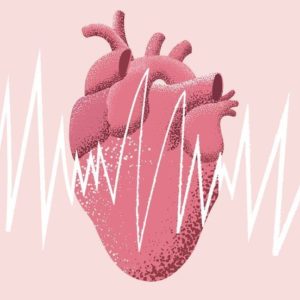
5 min|Dr. Jam Caleda
Breast Cancer Awareness: Creating a Plan
WellnessBasic Facts About Breast Cancer and Prevention
October is breast cancer awareness month and as part of cultivating a healthy mindset toward this cause, we can do our part by understanding some basic facts about breast cancer and in turn implementing a plan for prevention.
What is Breast Cancer?
All forms of cancer involve an uncontrolled overgrowth of our own cells. Through various factors, which include genetics, environmental stimulus, and immunity, normal cells are affected in a way that they no longer respond to the body's signals that keep them from growing at their normal rate. In turn they become irregular and eventually invade surrounding tissue, this is called malignancy.
The cancerous cells can then spread through the body via the blood stream or lymph, this is called metastasis. In breast cancer it is breast tissue cells that become delinquent and can subsequently invade other structures in the breast or spread to distant organs.
Breast cancer is almost exclusively found in women, however may occur in men also. The most common type of cells that change are the ductal cells that line the ducts of the breast (ductal carcinoma). Another common cell type that can become affected are the glandular cells that make the lobes of the breast (lobular carcinoma). If these cells grow out of control they can seep into the lymph and subsequently into the blood which increases the chance of metastasis.It is common to have other breast masses.
These are called fibromas or nodular cysts, and they are benign and have no ability to invade or spread through the body. Normally, with other clinical signs, and if needed, a biopsy, a physician will diagnose whether a mass is benign or malignant.
Key Statistics in Canada
- Breast cancer is the second most common cancer diagnosed in women, only behind skin cancer.
- In 2015 it is estimated that 25,000 women will be diagnosed with breast cancer.
- In 2015 it is estimated that 200 men will be diagnosed with breast cancer.
- 1 in 9 women will develop breast cancer in their lifetime.
- 1 in 29 women diagnosed with breast cancer will die from it.
Risk Factors
- Gender: Men can develop breast cancer but being female increases your chances by 100 times
- Aging: The older you are the increased risk you have of being diagnosed with breast cancer
- Genetics: There are few genes associated with breast cancer, particularly the BRCA1 and BRCA2 genes.
- Family history: women with close blood relatives who have this disease are in an increased risk for developing breast cancer. One first degree relative will approximately double a person's risk, where having two first degree relatives increases about 3 fold.
- Race: Caucasian females are more likely to develop the disease than are African, hispanic, or Asian descent ethnicities.
- Type of breast tissue: women who have more dense, fibrous and glandular tissue versus fatty tissue in their breasts, as detected by a mammogram, are more likely to develop a malignant mass in their future.
- Early Menses: Women who started their menstrual cycles earlier have a slightly increased risk. It is believed that they have a longer lifetime exposure to the hormones estrogen and progesterone which play a role in developing breast cancer.
- Radiation therapy: Any type of radiation, particularly to the breast from multiple mammograms, or previous cancer treatments significantly increases risk for breast cancer, especially if the treatments were performed as children or young adults.
- Oral contraceptives: Because most oral contraceptives contain estrogen and progesterone as a mechanism for regulating menses and pregnancy they have an increase breast cancer risk profile. The Depo-Provera injectable progesterone also increases risk.
- Drinking alcohol: This is a clear link to an increased risk of developing breast cancer, and increases with the amount of alcohol consumed.
- Obesity: Research shows that fatty tissue produces small amounts of estrogen, and the more of fat a women has can increase their lifetime production and exposure of this hormone.
- Sedentary lifestyle: Evidence is growing that as little as brisk walking for a total of 1-2 hours a week may reduce the risk of developing breast cancer by up to 18%.
Survival Rate
When caught early, in the 0-1 staging of breast cancer, the 5 year survival rate is 100%. This is due to the effectiveness of treatment during early stages. Stage II diagnoses has still a high 5 year survival rate of 93%, where as stage III is 72%, and stage IV is 22%.
Creating a Plan
Wherever we are on the scale of risk factors, it is clear to see that early detection is imperative in preventing the devastating effects of this cancer. The National Breast Cancer Foundation has a great program that allows people to create an action plan to assist in this endeavor and make it easy, free, and accessible to do (https://www.earlydetectionplan.org).
They have developed an application, compatible with most smart phones, helps women create early detection plans customized to your schedule and age. It teaches you how to perform a self-breast exam, sets reminders for clinical breast exams, and mammograms. It is free and easy to use as an application.
Maybe the best way to fight disease is to feel empowered to know that you can beat it. So to start of this series we are promoting the early detection of breast cancer, and support optimizing your body's health and healing tools to fight it before it starts.
Related Articles

5 min|Rhiannon Lockhart
How Your Gut Microbiome Affects Weight Loss, Hormones, and Overall Health
Nutrition, Health, Hormones
5 min|Dr. Taylor Green
Looking Beyond the Basics: Advanced Blood Markers & Hormonal Insights for Heart Health
Health, Heart Health, Hormones



